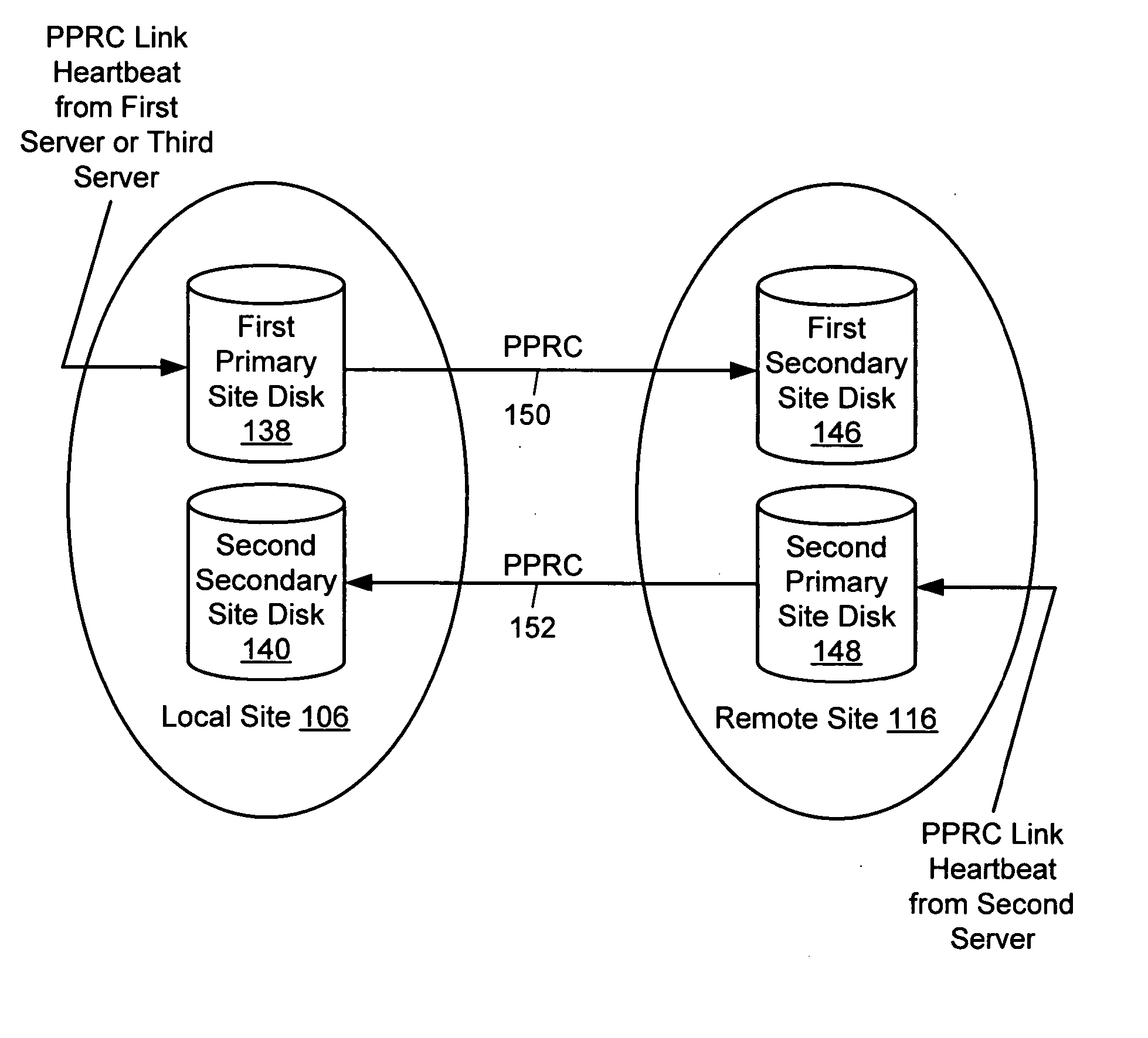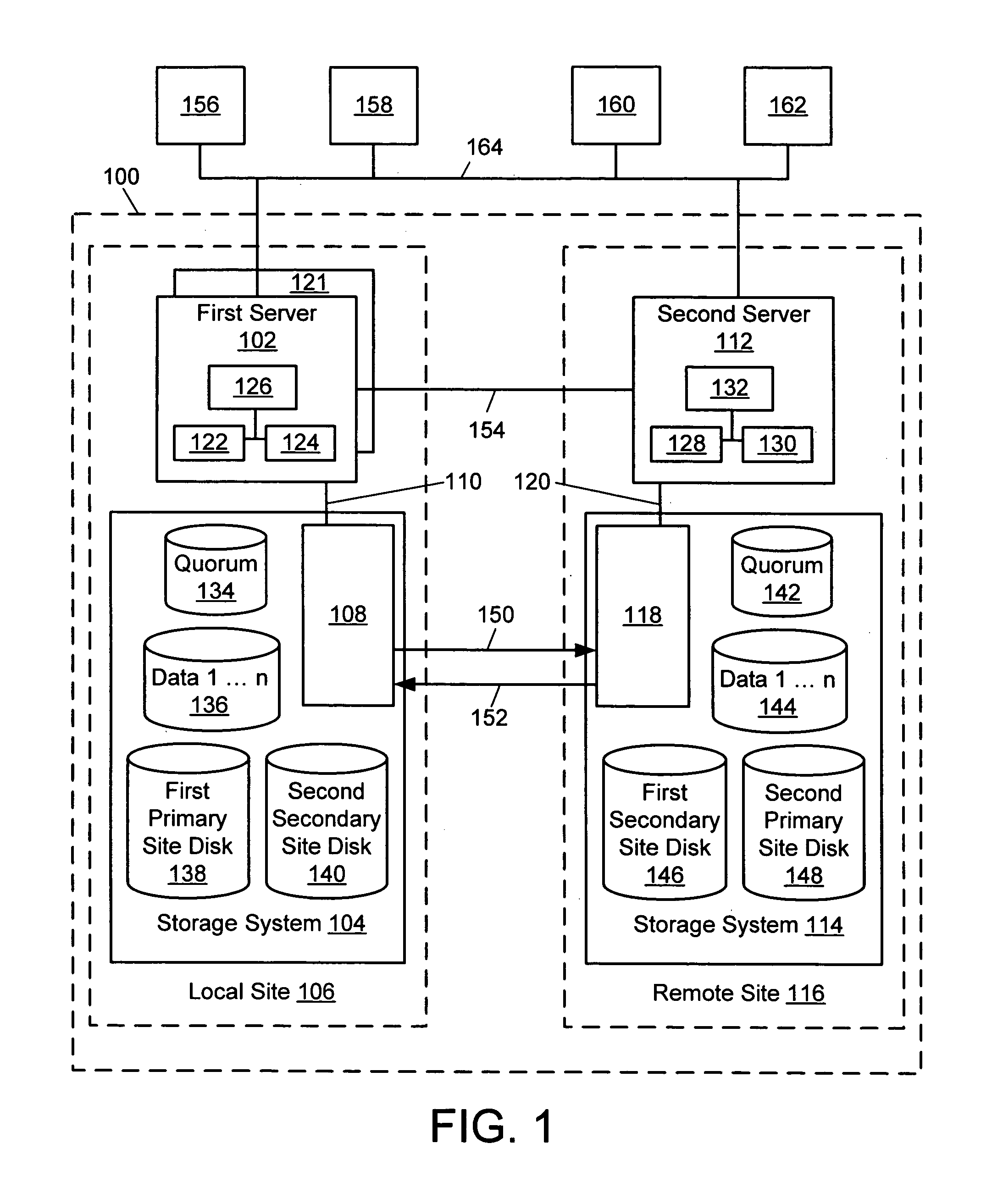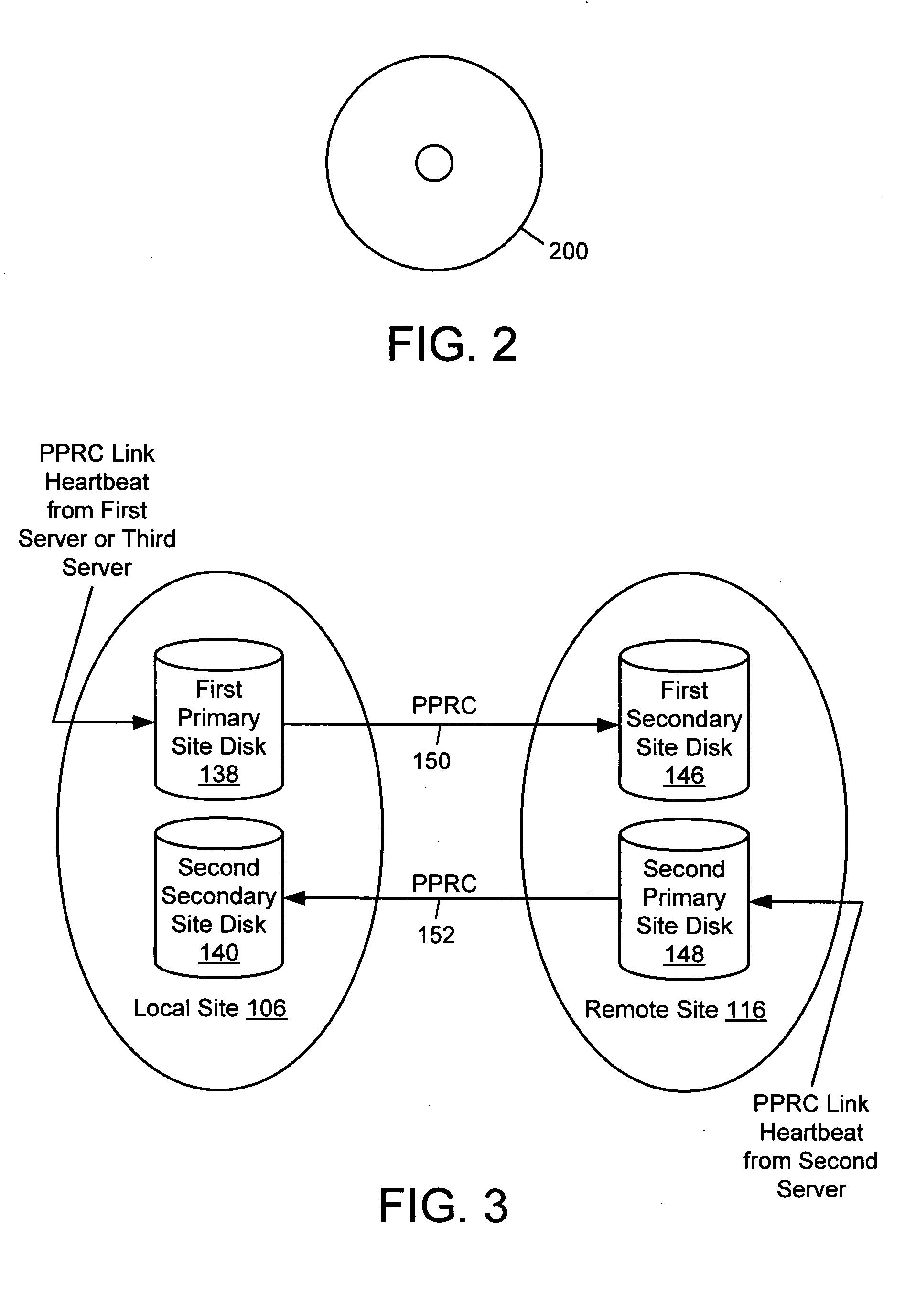Remote activity monitoring
a server activity and remote monitoring technology, applied in the field of remote monitoring server activity, can solve the problems of inability to determine which node owns cluster operations, and distance between primary and secondary sites, so as to avoid unfavorable split brain operation
- Summary
- Abstract
- Description
- Claims
- Application Information
AI Technical Summary
Benefits of technology
Problems solved by technology
Method used
Image
Examples
Embodiment Construction
[0014] The nature, objectives, and advantages of the invention will become more apparent to those skilled in the art after considering the following detailed description in connection with the accompanying drawings.
I. HARDWARE COMPONENTS AND INTERCONNECTIONS
[0015] One aspect of the invention is a computing system wherein server activity can be remotely monitored. As an example, the computing system may be embodied by the hardware components and interconnections of geographically dispersed cluster 100 shown in FIG. 1. The cluster 100 may be used, for example, for processing and storing data for banks, governments, large retailers, or medical care providers.
[0016] The cluster 100 includes a first server 102 (which may also be called a node), and a first storage system 104, which are located at a local site 106. The first server 102 is coupled to a first storage controller 108 in the first storage system 104 with link 110, which may be, for example, FCP (Fibre Channel Protocol) or p...
PUM
 Login to View More
Login to View More Abstract
Description
Claims
Application Information
 Login to View More
Login to View More - R&D
- Intellectual Property
- Life Sciences
- Materials
- Tech Scout
- Unparalleled Data Quality
- Higher Quality Content
- 60% Fewer Hallucinations
Browse by: Latest US Patents, China's latest patents, Technical Efficacy Thesaurus, Application Domain, Technology Topic, Popular Technical Reports.
© 2025 PatSnap. All rights reserved.Legal|Privacy policy|Modern Slavery Act Transparency Statement|Sitemap|About US| Contact US: help@patsnap.com



